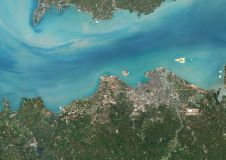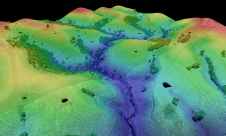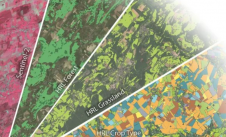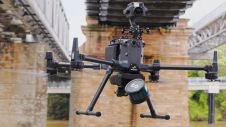ESA's CryoSat Reveals Antarctica in 3D
This article was originally published inGeomatics World.
Around 250 million measurements taken by ESA’s CryoSat over the last six years have been used to create a unique 3D view of Antarctica, offering a snapshot of the undulating surface of this vast ice sheet. CryoSat’s radar altimeter detects tiny variations in the height of the ice across the entire continent, including on the steeper continental margins where the vast majority of ice losses occur.
Importantly, the satellite’s orbit takes it to latitudes within 200 km of the north and south poles – closer than other Earth observation satellites. Naturally, the mission is also used to map changes in the thickness of ice floating in the polar oceans, which is particularly important for the Arctic.
The new digital elevation model (DEM) was revealed at this week’s gathering of CryoSat scientists in Banff, Canada. Tom Slater, researcher at the UK Centre for Polar Observation and Modelling (CPOM), said they used around 250 million measurements taken by CryoSat between 2010 and 2016 to create the most comprehensive picture of Antarctic ice elevation currently available. It offers wide range of applications – showing the surface of Antarctica in such detail means it can be used in anything from planning fieldwork to modelling the ice sheet.
Ice motion
The DEM of Antarctica also allows scientists to distinguish between changes in topography and ice motion when working with other satellite measurements, such as those used to calculate the balance between how much the ice sheet is gaining by accumulating snow and losing through melting and creating icebergs.
The model will soon be freely available via theCPOM portal, which already provides information on sea-ice volume and thickness, ice velocity and, shortly, ice sheets. In the meantime, however, the model can be downloadedhere. CPOM Director Andrew Shepherd added they want the DEM to be accessible to anyone who uses ice-sheet surface topography measurements in their work. This should benefit not only studies of the Antarctic ice sheet, but also projections of future sea-level rise.
铁的事实
科研任务经理,克里赛特- ESA的托马索Parrinello,said they are hearing some great results from our mission at the meeting here in Banff. It’s now widely recognised that dwindling polar ice is one of the first casualties of climate change, but it’s important to provide the hard facts – and this we can do with CryoSat. He added that it’s equally important to make sure the satellite’s data are correct and so they have a huge international field campaign just started in the Arctic to take ‘ground truth’ measurements from aircraft and on the ice to compare with those of CryoSat.
Source: ESA.
Make your inbox more interesting.Add some geo.
Keep abreast of news, developments and technological advancement in the geomatics industry.
Sign up for free












